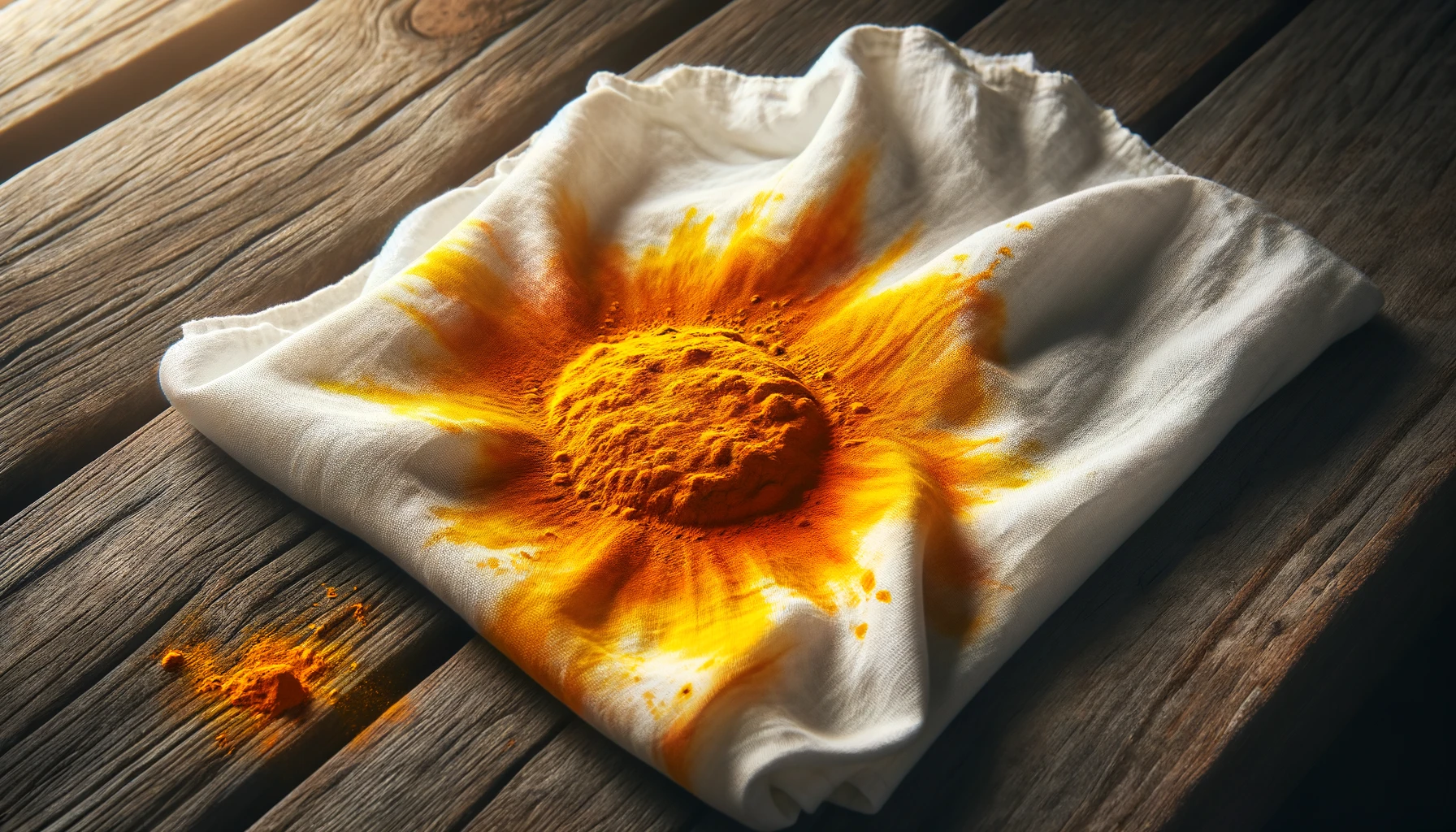Remove Turmeric Stains: Expert Tips for Spotless Surfaces & Fabrics
Table of Contents
- Introduction
- Key Takeaways
- Understanding Turmeric Stains
- Prevention Tips
- Removal Guide
- Professional Advice
- Conclusion
- FAQ
Key Takeaways
- Understanding the chemical makeup of turmeric helps in tackling its stains more effectively.
- Preventative measures can significantly reduce the occurrence of turmeric stains.
- Immediate action is critical for the successful removal of turmeric stains.
- Both natural and chemical cleaning agents can be used to combat turmeric stains, depending on the stained surface.
- When in doubt, professional cleaners can provide a safe and effective solution for removing stubborn turmeric stains.
Introduction
Turmeric, a golden spice revered for its health benefits and culinary uses, poses a notorious challenge outside the kitchen: its stubborn stains. The vibrant yellow hue, while a delight in dishes, can become a nuisance when it comes into contact with textiles, kitchen surfaces, and utensils. This guide is crafted to demystify turmeric stains, offering insights into their nature, preventative strategies, and detailed removal techniques. Whether you’re a culinary enthusiast or simply seeking to maintain pristine household surfaces, understanding how to manage turmeric stains is essential.
Understanding Turmeric Stains
The staining power of turmeric lies in curcumin, its active component, which possesses a brilliant yellow color. Curcumin’s affinity for binding tightly to materials makes turmeric stains particularly formidable. These stains are not just a superficial concern; they involve a chemical reaction between curcumin and the stained surface, whether it be fabric, plastic, or ceramic. Grasping the science behind these stains is the first step towards effective removal and prevention, guiding the selection of cleaning agents and methods tailored to combat turmeric’s persistent nature.
Prevention Tips
As with many aspects of maintenance, preventing turmeric stains is preferable to removing them. Implementing simple, proactive measures can safeguard your fabrics and surfaces from the yellow menace:
- When cooking with turmeric, wearing an apron or old clothing can prevent splashes on your attire.
- Using spill-proof containers for turmeric storage and careful handling during use can minimize accidental spills.
- Placing mats or protective covers on countertops and dining tables during meal preparation and consumption can shield surfaces from stains.
- Immediate cleanup of spills with a damp cloth can prevent the curcumin in turmeric from setting into surfaces, making later removal easier.
Adopting these habits not only minimizes the risk of staining but also promotes a cleaner, more organized cooking and dining environment
Removal Guide
Despite best efforts, turmeric stains can still occur. Fortunately, there are effective strategies for removing them from various surfaces:
Fabric
Immediate action is crucial for fabric stains. Blotting the stain with a mild detergent solution before washing can prevent setting. Soaking the fabric in a solution of water and white vinegar or lemon juice for 15-30 minutes prior to washing can help lift the stain. For durable fabrics, applying a paste of baking soda and water, letting it sit for a few hours, and then laundering in the hottest water recommended for the fabric can yield excellent results.
Hard Surfaces
Hard surfaces like countertops and tiles require a gentle yet effective approach. A paste made from baking soda and water applied directly to the stain, left to sit for 15 minutes, then scrubbed with a soft brush and rinsed with water, often does the trick. For more persistent stains, hydrogen peroxide (for light-colored surfaces) or a solution of water and white vinegar can be used, bearing in mind the need to test these solutions on an inconspicuous area first.
Dishware
Stains on dishware, especially plastic, can be tough to remove. Soaking the stained items in a mixture of hot water and dish detergent for several hours or overnight can loosen the stain. For more stubborn stains, rubbing the area with a paste of baking soda and water before washing can help. Utilizing bleach-based cleaners for non-porous dishware can also be effective, though it’s important to follow product instructions to avoid damaging the items.
Professional Advice
Some turmeric stains may prove too stubborn for home remedies, particularly on valuable or delicate items. In such cases, seeking the expertise of professional cleaners can save time and prevent damage. Professionals have access to industrial-strength cleaners and specialized techniques that can safely remove even the most persistent stains without harming the fabric or surface. Remember, the cost of professional cleaning is often a worthwhile investment in preserving the beauty and longevity of your items.
Conclusion
Managing turmeric stains does not have to be a daunting task. With a solid understanding of the nature of these stains and a toolkit of prevention and removal strategies, you can keep your belongings looking their best. Whether through immediate action, home remedies, or professional assistance, the vibrant yellow of turmeric need not be a permanent mark on your possessions. Embrace the spice of life, knowing you’re equipped to tackle any spills that come your way.
FAQ
What is the best way to remove turmeric stains from fabric?
Treating the stain with a mild detergent solution as soon as possible, followed by soaking in vinegar or lemon juice solution and then washing in the warmest water safe for the fabric, is highly effective.
Can turmeric stains be removed from plastic containers?
Yes, soaking the container in hot soapy water, followed by scrubbing with baking soda, can remove turmeric stains. For stubborn stains, a bleach-based cleaner suitable for the type of plastic may be used, following safety guidelines.
Are turmeric stains permanent?
While turmeric stains are notoriously stubborn, they are not necessarily permanent. Prompt and appropriate treatment can remove them from most materials and surfaces.

